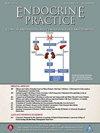降低住院低血糖:一个复杂问题的多样化方法。
IF 4.6
3区 医学
Q2 ENDOCRINOLOGY & METABOLISM
引用次数: 0
摘要
目的:住院患者低血糖是一种持续性不良事件。以降低低血糖为目的,实施了三项质量改善干预措施。每项干预都针对典型住院患者胰岛素管理的一个组成部分(基础、膳食和纠正),试图实现这一单一的质量改善目标。方法:比较某三级医院实施质量改善措施前后接受胰岛素治疗的非产科≥19岁患者的低血糖发生率。发生率定义为每个月发生低血糖事件的独特患者的数量除以该月的所有入院人数。干预措施包括将基于体重的胰岛素指导整合到电子病历(EMR)中,增加碳水化合物限制饮食,并将纠正胰岛素管理的阈值从150 mg/dL提高到180 mg/dL。结果:干预实施后,与膳食胰岛素相关的低血糖发生率显著降低(p = 0.02),与校正胰岛素相关的低血糖发生率显著降低(p < 0.001)。在整个样本中,与基础胰岛素相关的低血糖没有显著降低(p =0.25)。在以医院相关高血糖和2型糖尿病为重点的亚组分析中(通过排除1型糖尿病或囊性纤维化相关糖尿病患者),该指标显著降低(p = 0.005)。值得注意的是,在干预之后,机构血糖读数在目标范围内(71-179 mg/dL)下降,这可能意味着高血糖增加,因为已知低血糖减少(p值)。结论:通过由三种独特的QI干预组成的多管齐下的方法-每种干预针对住院患者胰岛素管理的一个方面-我们的学术机构能够显着减少住院患者低血糖事件的数量。本文章由计算机程序翻译,如有差异,请以英文原文为准。
Reducing Inpatient Hypoglycemia: A Diversified Approach to a Complex Problem
Objective
Hypoglycemia in hospitalized patients is a persistent adverse event. Three quality improvement interventions were implemented with the aim of reducing hypoglycemia. Each intervention was targeted at one component of typical inpatient insulin management (basal, prandial, and correction) to attempt to achieve this singular quality improvement aim.
Methods
Incidence of hypoglycemia in nonobstetrics patients ≥ 19 years of age at a tertiary hospital receiving scheduled insulin before and after the implementation of quality improvement initiatives was compared. Incidence was defined as the number of unique patients with a hypoglycemic event in each month, divided by all admissions for that month. The interventions included integrating weight-based insulin guidance into the electronic medical record, the addition of a carbohydrate-limited diet, and increasing the threshold for correction insulin administration from 150 mg/dL to 180 mg/dL.
Results
After implementation of the interventions, there was a significantly lower incidence of hypoglycemia associated with prandial insulin (P = .02) and correction insulin (P < .001). There was not a significant decrease in hypoglycemia associated with basal insulin in the overall sample (P = .25). There was a significant decrease in a subgroup analysis focused on hospital-associated hyperglycemia and type 2 diabetes (via exclusion of patients with type 1 diabetes or cystic fibrosis-related diabetes) (P = .005). Notably, following the interventions, there was a reduction in institutional blood glucose readings within goal range (71-179 mg/dL), which presumably translates to an increase in hyperglycemia, given the known decrease in hypoglycemia (P value < .0001).
Conclusion
Through a multipronged approach consisting of three unique QI interventions – each targeting one aspect of inpatient insulin management – our academic institution was able to significantly reduce the number of inpatient hypoglycemic events.
求助全文
通过发布文献求助,成功后即可免费获取论文全文。
去求助
来源期刊

Endocrine Practice
ENDOCRINOLOGY & METABOLISM-
CiteScore
7.60
自引率
2.40%
发文量
546
审稿时长
41 days
期刊介绍:
Endocrine Practice (ISSN: 1530-891X), a peer-reviewed journal published twelve times a year, is the official journal of the American Association of Clinical Endocrinologists (AACE). The primary mission of Endocrine Practice is to enhance the health care of patients with endocrine diseases through continuing education of practicing endocrinologists.
 求助内容:
求助内容: 应助结果提醒方式:
应助结果提醒方式:


